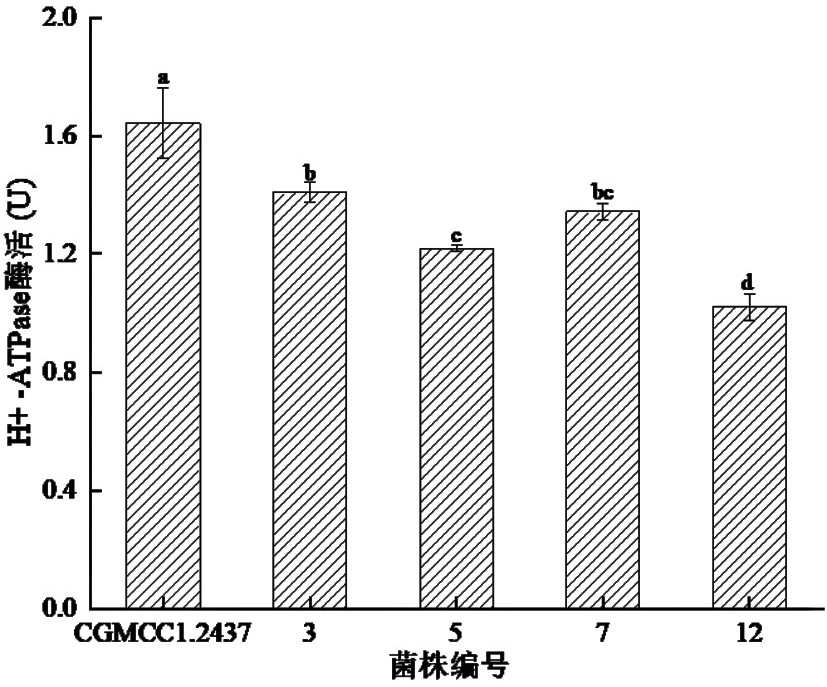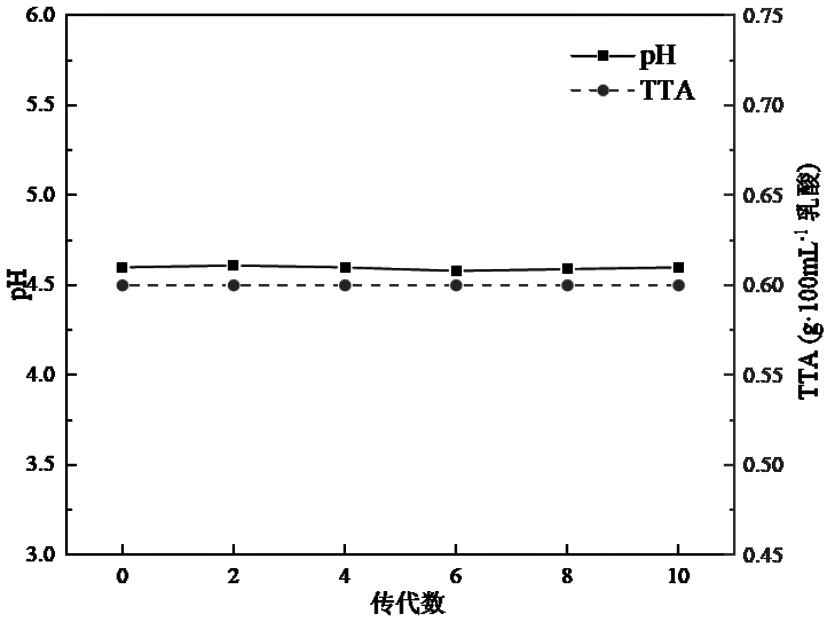Weak post-acidification Weissella fusiformis and application thereof
A Weissella and post-acidification technology, applied in the field of microorganisms, can solve the problems of unstable properties of screening strains, unsuitable for fermented fruit and vegetable products, and potential safety hazards, and achieve rich amino acid and flavor content, excellent texture and color. , The effect of weak post-acidification performance is stable
- Summary
- Abstract
- Description
- Claims
- Application Information
AI Technical Summary
Problems solved by technology
Method used
Image
Examples
Embodiment 1
[0057] Example 1 Screening of Weak Postacidification Strains
[0058] The experimental strains were isolated and purified from fermented vegetables all over the country. The fermented vegetable samples are shown in Table 1. Take an appropriate amount of fermented fruit and vegetable samples and homogenize them in a homogenizer. -1 The bacterial suspension was diluted by 10 times to prepare 10 -2 ~10 -6 bacterial suspension, draw 10 -4 、10 -5 、10 -6 100uL of bacterial suspension with gradient concentration were spread on the MRS medium plate, and cultured anaerobically at 37°C for 48 h. A single colony with different colony morphology was selected and purified by streaking for 3 to 4 times according to the morphological characteristics of the colony, and the obtained pure strains were numbered. A total of 59 strains were isolated and purified from fermented vegetables.
[0059] Table 1 Sample table for strain screening
[0060] .
[0061] The acid production rates of 5...
Embodiment 2
[0071] Example 2 Genetic Stability and Strain Identification of Weak Postacidifying Bacterial Strains
[0072] No. 12 weak post-acidifying bacterial strain in Example 1 was subcultured for 10 generations through MRS broth medium, and was subcultured once every 8h with 2% (v / v) inoculum size. Determination of pH, TTA, the results are as follows figure 2 As shown, the pH and TTA are basically consistent, and the strain has good genetic stability in fermenting acid production.
[0073]Bacterial Genome DNA Extraction Kit was used to extract the DNA of No. 12 strain and perform PCR amplification. After PCR amplification, the product was gel-cut, purified and recovered, and then sent to Sangon Bioengineering (Shanghai) Co., Ltd. for sequencing. The sequence is shown as SEQ ID NO.1. The sequencing results were compared online by the National Center for Biotechnology Information (https: / / blast.ncbi.nlm.nih.gov / Blast.cgi): the 16SrRNA of this strain is 99% homologous to Weissellacon...
Embodiment 3
[0074] Example 3 Application of fusion Weissella PCYLJY-1 in the preparation of fermented kimchi
[0075] Press 10 6 CFU / g was inoculated with PCYLJY-1 and the control strain Lactobacillus plantarum CGMCC1.2437 to ferment kimchi, and the fermented kimchi was stored at 25°C, and samples were taken on the 0d, 2d, 4d, 6d, and 8d of kimchi storage to determine the pH, TTA, and viable count of kimchi , texture, color, organic acid, amino acid, volatile flavor substances, and sensory evaluation. The fermentation effect of PCYLJY-1 was evaluated with the control strain CGMCC1.2437 fermented kimchi as a control.
[0076] (1) Acidification effect after fermented kimchi
[0077] Changes in pH and TTA of kimchi fermented with Weissella PCYLJY-1 as image 3 As shown, the pH and TTA of PCYLJY-1 fermented kimchi remained stable during storage, the pH was stable at about 3.80, and the TTA was stable at about 0.26g lactic acid / 100g kimchi, while the stable pH of the control strain CGMCC1.24...
PUM
| Property | Measurement | Unit |
|---|---|---|
| compression ratio | aaaaa | aaaaa |
Abstract
Description
Claims
Application Information
 Login to View More
Login to View More - R&D Engineer
- R&D Manager
- IP Professional
- Industry Leading Data Capabilities
- Powerful AI technology
- Patent DNA Extraction
Browse by: Latest US Patents, China's latest patents, Technical Efficacy Thesaurus, Application Domain, Technology Topic, Popular Technical Reports.
© 2024 PatSnap. All rights reserved.Legal|Privacy policy|Modern Slavery Act Transparency Statement|Sitemap|About US| Contact US: help@patsnap.com










